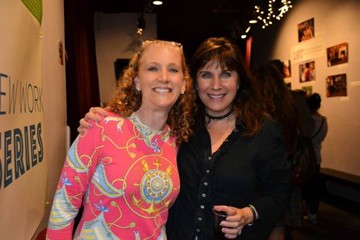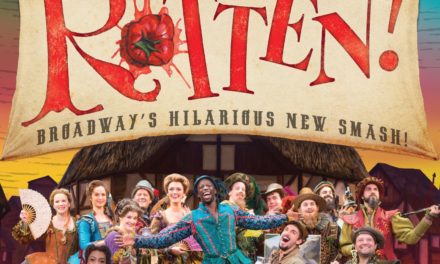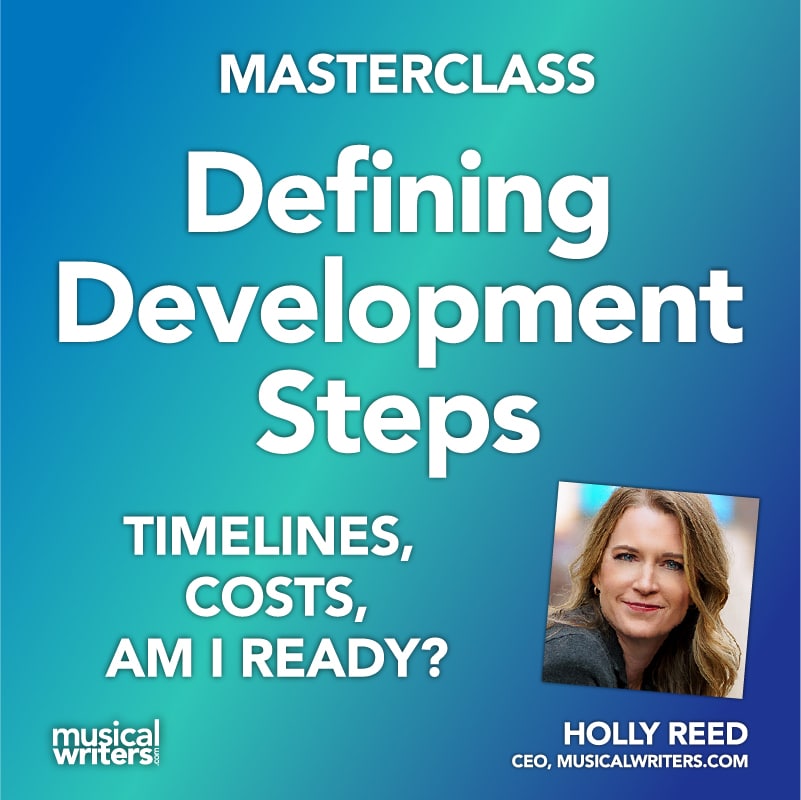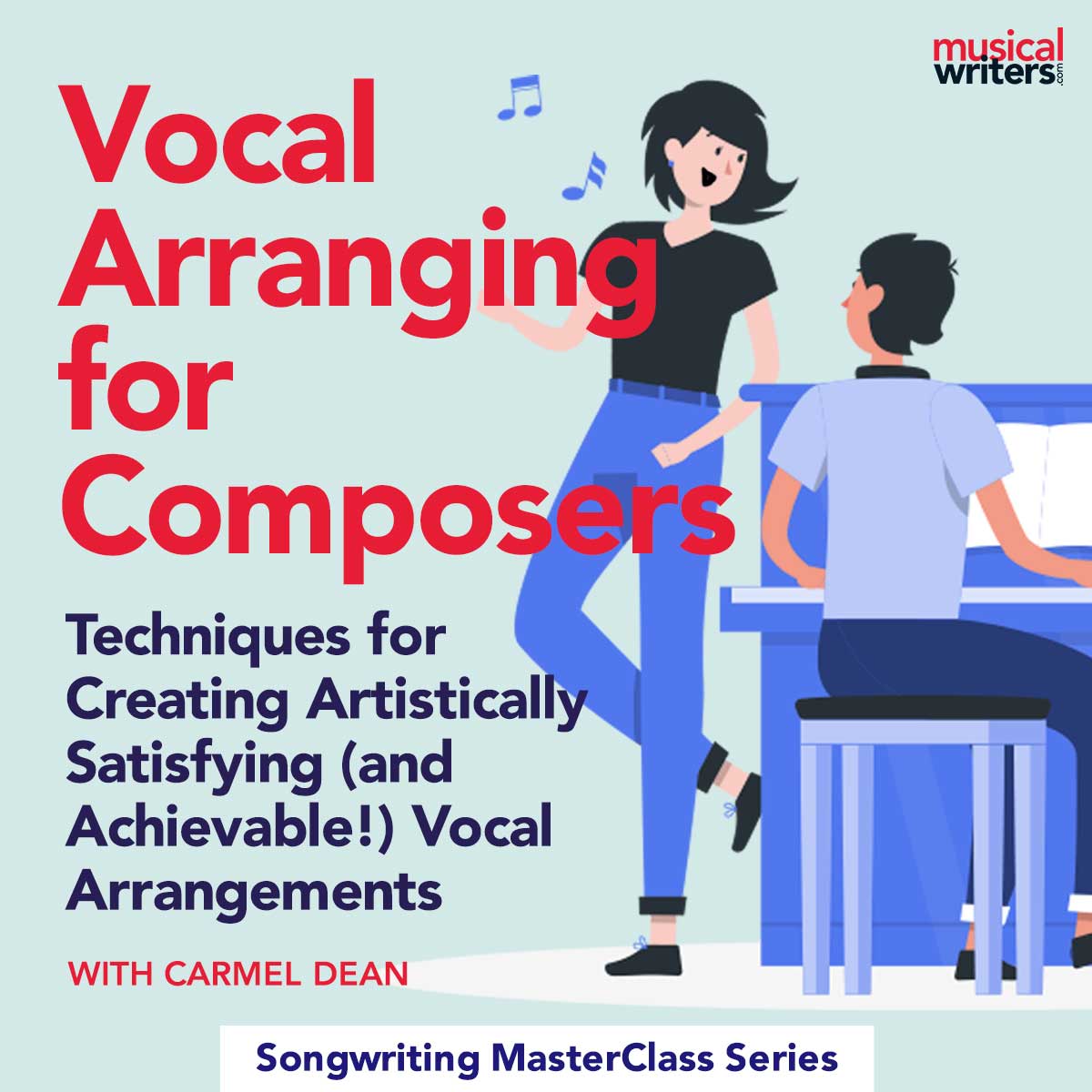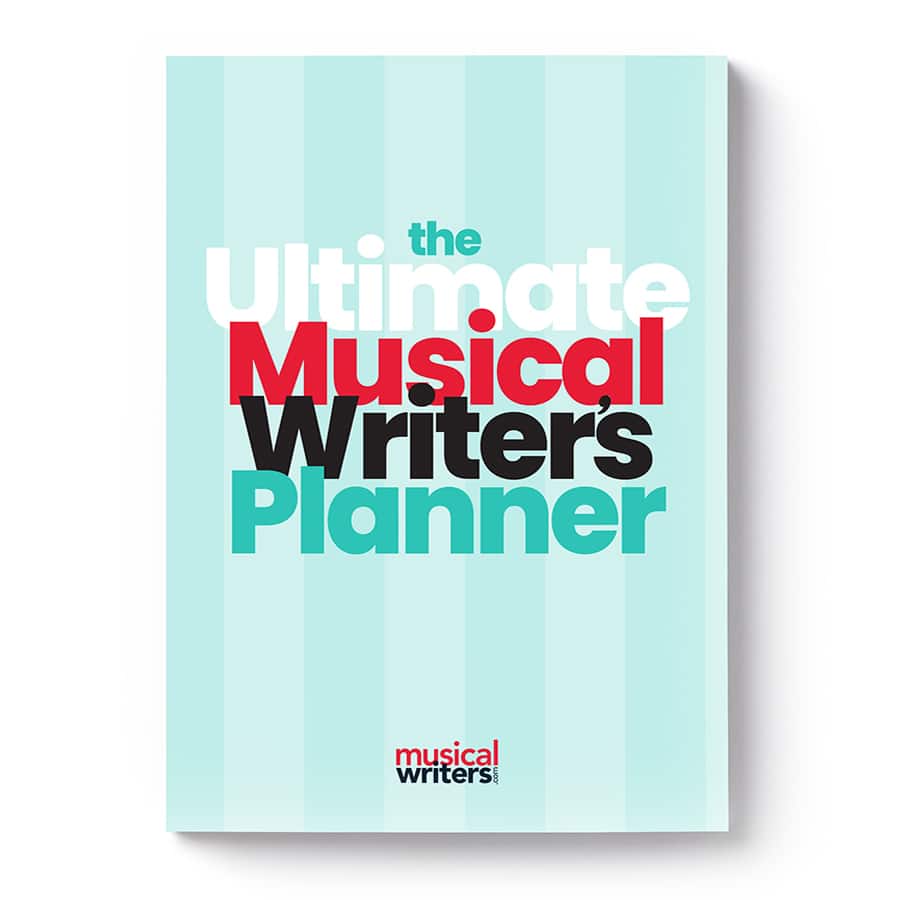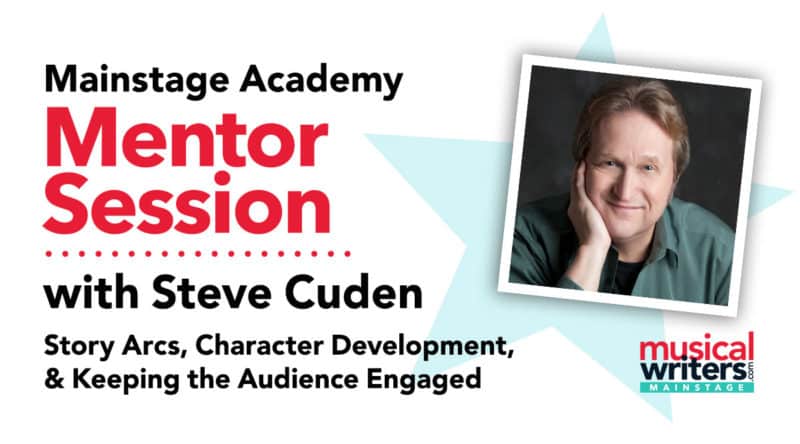
I am extremely happy to welcome Steve Cuden as one of our valued mentors to the MusicalWriters Academy.
Steve is perhaps best known for co-conceiving the Broadway and international hit musical, Jekyll & Hyde. He wrote the show’s original book and lyrics with renowned composer, Frank Wildhorn. Steve has written ninety teleplays and has published two books on scriptwriting, Beating Broadway and Beating Hollywood. He is a director, a co-producer, and just retired as Assistant Professor of Screenwriting at Point Park University.
If you haven’t picked up a copy of Steve’s book Beating Broadway, which is a must-read on musical structure and the 7 plot points, you can get it by clicking here!
I invited Steve to be part of our Academy Meet-up on June 10, 2020. Our members sent in questions for Steve to answer, and of course, he didn’t disappoint. We limited our Q&A to 60 minutes, but we could have sat for hours taking notes and soaking in Steve’s insight.
From our attending members:
[Steve is] “…a literal treasure trove of guidance and information!” ~Jack
“Great session with Steve today. What a thrill to be in the same room…I thought it was helpful, interesting, great nuggets of wisdom. MusicalWriters Academy has so many great offerings….I am continually amazed at the value of this group. You have created an amazing resource and community for musical writers. The amount of content you provide is staggering and I am truly grateful for your hard work and devotion!” ~Linda
Below is an excerpt from our session. If you’d like the full transcript, or would like the opportunity to participate in future Mentor Sessions with industry pros, join our Mainstage Academy membership here.
1. How general or specific is best to make your lyrics?
There are great songs in Rent or Dear Evan Hansen or Shrek which refer to characters and can’t be fully understood without knowing the story, but there are also great songs in Les Mis and Jekyll & Hyde that stay away from mentioning specifics so that the song can be enjoyed more widely. How do you decide which way to go on that?
Steve Cuden: Here’s my point of view. The more specific a song is to a moment, the better it is for a show. Sondheim wrote (in one of his two great big books about “The Hat”) that content dictates form and style. This is his mantra. He says he’s got this mantra running in his head all the time. Content dictates form and style. Less is more, and God is in the details. I think that’s pretty valuable information coming from the maestro of the maestros.
I’d like to speak for a moment about the purpose of songs. The magic of a song is it can actually take you inside what a character’s thinking or feeling. I’m encouraging you, as I encourage everybody that I work with, to think of your songs as the opportunity to go internal into a character. Now, you’re going to have songs that are broader, that are chorus-based, that are people marching around stage like in The Music Man and that kind of thing. Yes, those are valid and viable as well. But for most songs, how specific should a song be? It should be about what a character’s feeling and what a character wants.
The other thing that you need to consider is every single element of your show, every element that you have, every moment, every atom of every part of your show, should do one of two things. It should either drive the plot forward in some way or it should expand our understanding of the characters. If it doesn’t do either of those two – best of all is if you can do both at the same time, expand our understanding of the character and drive the plot forward. If you can do both, even better. But if it doesn’t do either of those, get rid of it.
If you have something in your show, including your songs, that don’t move the story forward or expand your understanding of character, then just cut it. You’ll see that it’ll make everything tighter and better and flow much better.
Holly Reed: Yeah, absolutely. I think a lot of us when writing, think about shows we love where there are standout songs that are the popular songs from those shows. Like for me, I’m a huge Wicked fan, and obviously “Defying Gravity” is a huge song that everybody knows. But I don’t think you can set out to write “Defying Gravity,” that is, set out to write a song that’s going to be the standout. It’s kind of putting the cart before the horse. If something happens that’s successful, then that’s gravy. But I think you do have to write for the show.
Steve Cuden: Everything that you write, it’s my belief that the more detailed and specific it is to moments, the better. It’s really that simple.
[more in the transcript]
Holly Reed: Great. Let’s go to a totally different topic. This is a topic of flashbacks.
2. What are your recommendations or thoughts about flashbacks or non-sequential timelines in a musical?
Steve: I can’t think of too many musicals that have flashbacks in them. Flashbacks are a wonderful convention in novels and a wonderful convention in movies and TV. I think there’s a pretty good reason to not have flashbacks in stage musicals, and it has to do with practical things.
It has to do with you’ve suddenly got to change the set in some way, probably, to make it look like it’s the past and then today or whatever you’re doing time-wise. Also, you’ve got to change costumes. And what if you have an older character and you’re trying to flash back to the teen years? I guess you could double cast it with a different actor. But I think it presents a staging issue, which is why it’s avoided in pretty much every musical that I can think of.
Although I’ll give you a couple examples of how time can be played with. For instance, Merrily We Roll Along, a Sondheim show, is actually told in reverse. It goes backwards in time as the show moves forward. So that’s playing with time that way. It’s not a flashback; it’s moving backwards.
If you know the show Chicago, they don’t flash back so much as they refer to the past. The girls talk about how they’ve killed these various men. So it’s talking about the past more than showing us the past.
In Man of La Mancha – this is not so much time as it is it goes from the real world to the fantasy world of La Mancha. You’ve got that kind of a flip in time and space.
The one that I think is maybe the best example of everything at one time is a more modern show called Fun Home. In Fun Home, we have the older character looking at the characters from the past, and they’re all in at the same time.
It’s always easier to come forward. We’re starting back here and then we’re coming forward, rather than starting in the present and going into the past. It’s always easier to move forward. That you see frequently, and I’ll tell you where you see it a lot: you see it from the end of Act I through your intermission, and now we go way ahead.
Holly Reed: I was thinking the same thing. Intermission is a place where you are kind of allowed to do a time jump because just the fact that we have a 10 or 15 minute break, I think the audience is willing to assume maybe something happened during that time while they were gone.
Steve Cuden: In fact, frequently something has happened in that time, and we’ve moved forward in some way. Whether we’ve moved forward 10 minutes, an hour, three days, two years, whatever it is, we tend to jump forward. Forward jumps are easy. Backward jumps are a little trickier.
[more in the transcript]
Holly Reed: The next question is about the length of a scene without a song.
3. How long is too long for a scene to have dialogue and no song?
Steve: So here’s the mantra that you should be using through all of your work. This is the number one cardinal sin of all writing. Don’t be boring. You can get away with a multitude of sins if you’re just entertaining.
The other thing that’s very helpful is, are you good at spotting songs? Does a song belong here? Can the emotion of the moment be better expressed through a song than through the dialogue? That’s a big one. So song spotting is extremely important.
There’s a reason why most shows – not all, but most shows are written as a play first, and then somebody comes along called a composer and a lyricist, or people come along, and they say, “This would make a great moment for a song and this would make a great moment.” Frequently the librettist can suggest that, and the librettist should be involved in that song spotting.
I think that most great, memorable, popular musicals – most – do not have a long time between songs. Why is that? Because people are paying a lot of money to see a musical, and they want to see the songs and the dance and costumes and the fancy lights, and that’s what they’re there for. So if you’re trying to express everything through the course of dialogue, you probably are going to bore the audience.
No scene that’s compelling is too long, and no scene that’s boring is too short. Remember that. It’s on you, the writer, to make the scenes just crackle, and that’s the way you have to think of it. Your scenes need to crackle. If they don’t, guess what’ll happen? You’ll do a reading of your show, and it will lay there like a big, flat egg.
Holly Reed: Another thing to do is get another set of eyes on it. Our director will come back and say, “I really think we can cut the first half of page 70. You can jump from here to here. You’re not going to lose anything as far as how the story and the characters are progressing.” That’s hard to see sometimes as a writer. We fill in between the lines and we think all this stuff is so important, but sometimes a director – they know how to condense things and how to make it concise. So get another set of eyes on it.
Steve Cuden: The true test is does any element – does a line of dialogue, does a character in a scene, does any element move the story forward or does it expand our understanding of character? If it doesn’t do one of those two things, it needs to be removed. Period. And that’s brutal. That’s really hard. You will all have had this experience. “Oh my God, I’ve just written the best line I’ve ever written. What a great line!” But it doesn’t belong in that moment, and it’s got to go. It’s brutal. It’s difficult.
[more in the transcript]
4. Do I need to consider the logistics of set and scene changes when I write the book, or do I leave all of that to the director?
Steve Cuden: I took this to mean am I writing out all the detail of set changes in the libretto, and the answer is no, you don’t write out every detail. What you have to be able to do is you have to explain enough for people that are reading it to understand what your intentions are.
When I’m consulting on scripts, I’m sometimes – not often, but I’m sometimes telling people, “You’re explaining too much. You’re trying to tell where the lights go and what color they should be and how the costumes should be changed.” No, no, no, you don’t need any of that. That’s why you have all those craftspeople that are professionals that should know what they’re doing. Let them do their jobs.
Also, here’s a big one for me personally. I don’t think you should tell the actors, ever, in your writing how to act. Actors will act in the moment. They will find those moments, and most great actors, when they get a script and underneath every character line it has what we call the “wrylys” – the parentheticals (people will write in there “wryly,” as in it’s a wry line).
But the truth of the matter is, the actors will cross all those things out and they will play in the moment. If you write in there the character says this angrily, and in that moment as they’re acting, the actor starts to laugh, that’s how it will go. It won’t be angrily. It’ll be laughing. It won’t be what you wrote.
Holly Reed: On the flip-side of that question, what about considering the challenges of set? I’ll use an example from my show. We have a Christmas show, and we have a sleigh, and it’s got to fly through the air. Do we need to consider if there’s a challenge – a helicopter flying through, or something falling through the floor or whatever it might be. Do we try to anticipate that, or do we just write it like we see it?
Steve Cuden: Write it like you see it. If the sleigh is going to fly through the air, it’s on the technicians to figure it out.
Holly Reed: So the sky’s the limit from the writing perspective.
Steve: For sure. Well, obviously, you don’t want to write in something that you know is going to cost somebody tens of millions of dollars to mount. If you’re doing Miss Saigon and you’ve got money and great technicians, they’re going to figure out a way to drop a helicopter. But if you write that in and you don’t have that production budget, good luck. But then it has to be suggested. It has to become theatrical. You do it with sound effects, which is really cheap. That’s how you do it.
[more in the transcript]
5. Is there a certain ratio or number of songs that should be sung by your main character?
Steve Cuden: The answer is no, there’s no specific. You do need to establish empathy for your protagonist. Without empathy, the audience doesn’t care. We want to go on a journey with this character. We want to empathize. So it makes very little sense to have us empathize for a lead character in a musical who isn’t singing on a huge number of the songs.
Is there an actual ratio? No. There are no rules. I just think that if you’re writing a musical, your protagonist is probably going to sing, if not solo throughout the show, sing with other people throughout the show. It’s likely that your protagonist should dominate in some way.
You can find shows where there’s more of an ensemble. I’ll give you a really good example where it doesn’t hold true. Who’s the protagonist of A Chorus Line? It’s an ensemble show. Everybody sings. Everybody has a song, everybody has a solo. Anybody know who the main character is? Who’s the protagonist?
Audience member 1: The director.
Steve Cuden: Nope, he doesn’t have the goal. Who has the goal? Who has the arc?
Audience member 2: It’s Cassie.
Steve Cuden: That is correct. Cassie is the one who has the arc in the show. One of the things that she has that really separates her is she’s the one with the pas de deux in Act II. Nobody else has a pas de deux, or pas de une, whatever it winds up being. She doesn’t sing in a whole lot of songs, but she is the protagonist. It is an ensemble.
But in every ensemble, if you’re writing an ensemble show, there should be one character who has the arc. Without that, the audience tends to drift, and you don’t want the audience to drift. You want the audience to focus on a character whom we follow and empathize with, and then we will feel a sense of relief at the end of the show because that character does (or does not) get his or her goal.
Holly Reed: I mentioned in the chat to read the chapter on stars in The Secret Life of the American Musical. There’s a good discussion in there about how some of the older musicals would rely on a star, so they would make sure they gave that star a lot of songs. But now, it’s more about character because you don’t want to depend on having a star to make your show fly. Your character has to fly.
Steve Cuden: It’s truly dependent. If somebody comes to you and says “Hey, we love your idea, we love your work, we love your songs, we think you’re a great writer – we’re going to put $20 million behind your show, but you know what? We’re going to get Hugh Jackman to be in the show, and we want Hugh Jackman to play that part,” guess what you’re going to do? You’re going to write the show around Hugh Jackman.
Holly Reed: And I’m going to be at every performance. [laughs] Great, let’s keep going.
[more in the transcript]
6. What kind of strategies do you use to keep the audience engaged while the main characters develop and the plot moves along?
Conflict
Steve Cuden: This is the biggest note that I give in all of my consultations. It’s the biggest note I give to all of my students. This is the note that comes up over and over and over again, sometimes to a point of ad nauseam. There’s no conflict. Conflict, conflict, conflict, conflict, conflict. There should be no moment in your entire show, no moment, none, zero, zip, zilch, that does not have some form of conflict in it.
The way you define conflict is C = D + O. Conflict equals desire plus an obstacle. That means you, the writer, have got to put in one obstacle after another to the protagonist getting to his or her goal.
Here’s what will happen when you do: The audience will love you. Why? Because they will be living vicariously through this character’s struggle, and when that character is able to achieve his or her goal, the audience will be in love with you. They’ll be enthralled. They’ll be enamored. “Oh my God, that felt so great.” This is what all audiences want.
[more in the transcript]
Three Dimensional Characters
The other thing that you need to think about is you need to develop three-dimensional characters. Those of you that have never read a book called The Art of Dramatic Writing by Lajos Egri, you must read it so that you can understand how to develop three-dimensional characters. Those three dimensions of character are physiology, sociology, and psychology. The Art of Dramatic Writing is a fairly musty, 80- to 90-year-old book that was written about playwriting, but it will absolutely give you all of the basics you’ll ever need to understand about how to make a character three-dimensional.
Character Arcs
A character arc is when a character goes from his or her want, which is set at the inciting incident – that’s why we call it the “I want” song; “I want something,” that’s the goal – and eventually gets to their need. That’s the arc. To go from their want at the inciting incident to their need at the resolution.
An example of want to need. An example I like to use in screenwriting is a man goes into a bank to rob the bank. That’s his want. He wants the money. The bank shuts down. He’s stuck inside with all these people and the tellers, and in the course of the story, he falls in love with a teller behind the counter. At the end of the story, he’s captured and carted away. He reached his need. He went from a want of money to a need for love. His need is love.
A gigantic number of musicals wind up with the need being love. Why? Because we all want to be in love. It’s human. Love is a very powerful motivator in a lot of people.
But the want is what triggers the story. The need is what a character needs. Think about wants and needs. Wants are plentiful. You want a hamburger, you want it with ketchup, you want it without pickles, you want it to have sesame seed bun, but you don’t want mustard. Those are your wants. They’re plentiful. Your needs are very, very few. You need food. You need air. You need a little warmth. You need a little human affection. But if you start to think about your actual, bottom line primitive needs, they’re very few. Love is one of them. Most people need love. So that’s why you get from a want to a need that way.
7. What are some common story arcs?
Steve Cuden: The biggest one in musicals is the same one that you find in rom-coms. What is that? Boy meets girl in a cute way, boy and girl fall in love, boy and girl struggle to stay in love, boy and girl fall apart only to realize boy and girl actually do love each other. Now, in today’s world, where the boy/girl plotline has morphed into boy/boy, girl/girl, it can be any of those, it could be multiple characters – you could hybridize this, and you should think about hybridizing. We’ve seen every plotline there is imaginable.
What you’re really asking is about a compelling theme and premise.
For example:
In Avenue Q: “What’s your purpose in life?” “Do I find my purpose or not?” There’s even a song called “Purpose” in Avenue Q.
“Don’t fool Mother Nature” is a big one [found in] Spider-Man: Turn Off the Dark, Jekyll & Hyde, all these kinds of shows.
Greed is a huge arc, theme and premise. “Greed leads to your ultimate destruction or your ultimate downfall.” Fiddler on the Roof. “If I Were a Rich Man,” and he winds up losing his family.
“Karma is a bitch.” That’s Sweeney Todd.
You can find all kinds of these things–and honestly, I’m not really trying to sell my book—but I’m the only person who’s ever got 40 musicals broken down into their narrative beats and plot points in the back of Beating Broadway. There are 40 famous musicals, 35 Broadway shows and 5 movie musicals, broken down into their basic beats and plot points, and in there you can see how those things arc out.
Let’s talk about theme and premise for a moment. I like to think of theme as one word. It’s usually one; sometimes it can be two or three, but most of the time it’s one word that is the underlying principle of the story. That word is usually something that is universal to humanity. That underlying theme word could be greed, love, could be vengeance. It could be any of those types of words. They tend to be universal.
A premise – what we’re calling this underlying principle – is a provable proposition. You’re proposing some kind of provable proposition that you will prove through a mechanism called story. That’s the mechanism: story. The premise does not have to be universal. The underlying theme is a universal idea, and the premise of your story is also underlying, but it’s a provable proposition incorporating that thematic word.
I was trained that you develop your characters, you come up with your plotline, and you write at least your first draft, if not multiple drafts, before you sit down and go, “Huh, what is the theme I’m trying to express here?” Don’t worry about your theme at first. Don’t worry about it. Let the story be the story.
But you must get to a point at some juncture and say, “This is what the story is and here’s what I believe the theme of the story is,” and then you’re obliged to go back to the beginning of your writing, of your libretto, go back to the beginning and make sure that that theme and that premise are expressed throughout the whole, that it doesn’t go sideways on you.
So just write a great story. Just write great three-dimensional characters in conflict with other great three-dimensional characters, where the protagonist has a goal set at an inciting incident that winds up being resolved at the end of your story, and then figure out what your theme is, and then make sure that it’s there.
[more in the transcript]
Further help from Steve Cuden
Holly Reed: Someone asked, “Do you read scripts and critique?”
Steve Cuden: Yes.
Holly Reed: Steve did an early review of our show a couple years ago and it was fabulous, and he kicked my tail. So just a warning. [laughs]
Steve Cuden: If I take you on as a client, I’m not going to soft pedal.
Holly Reed: No mercy. [laughs]
Steve Cuden: There’s no reason to be that way. I’m kind of intense about it. That’s just the way it is.
Holly Reed: That’s the only way that it’s worth it.
Steve Cuden: It is, because if I don’t kick your butt a little bit – and believe me, it’s only a little bit – when you get out into the real world – and Holly will tell you that, too – the real world will kick your butt even harder. [laughs]
Holly Reed: Yes, it will.
Steve Cuden: There’s a very good friend of mine who created both the Port-A-Potty and the cruise control that you have in your car. He invented both of those. He likes to say that “there’s nothing like the unmistakable sound of the sledgehammer of the marketplace.” When you get out there and people start talking to you about your work, they’re going to buy it or they’re not going to buy it. That’s the first hammer. The second hammer is they buy it and then they start ripping it up and down. I’ve been through every note session you can think of, and it’s brutal. So you just have to get a thick skin about it, that’s all.
Holly Reed: Absolutely. Thank you so much, Steve, for your time and your wisdom. Thanks to everybody for coming today. We’re going to slate Steve for another session, so be watching for that.
Steve: Write well. Have fun.
Holly: All right, thanks, everybody. Have a good week.
For more information on Steve’s work, visit www.SteveCuden.com. Also check out Steve’s podcast for storytelling creatives at www.StoryBeat.net.
This is a small excerpt from the full Academy Mentor Session with Steve. If you’d like the full transcript, or would like the opportunity to participate in future Mentor Sessions with industry pros, join our Mainstage Academy membership here.


